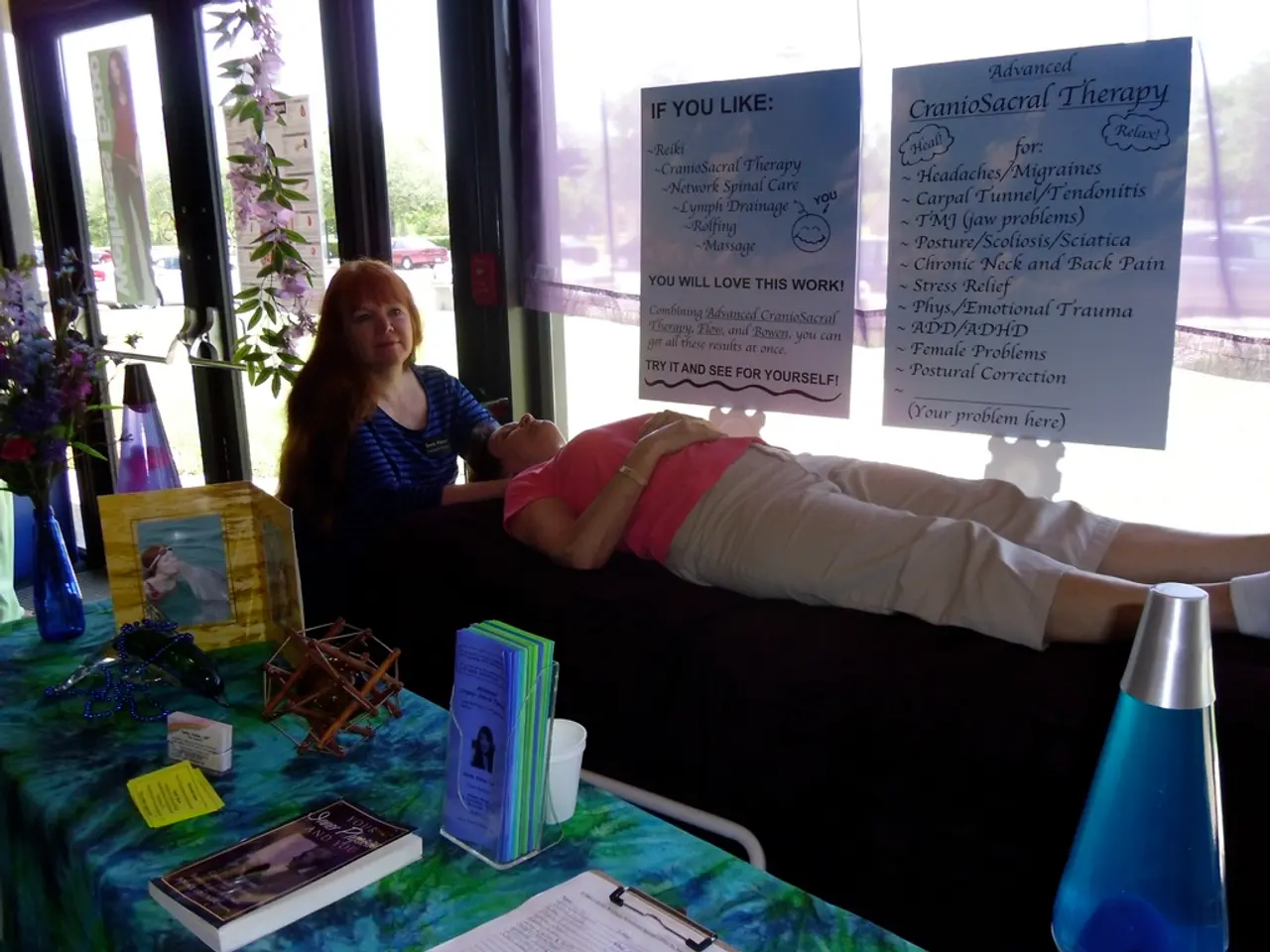Differentiating Stress and Anxiety: Identifying Signs, Symptoms, and Remedies
In today's fast-paced world, stress and anxiety have become common experiences for many. While they are normal human reactions, they can become chronic or lead to anxiety disorders if they persist. Anxiety might cause feelings of unease, dread, sweating, and nervousness, and it is the body's response to stress.
Stress hormones cause the heart to beat faster, resulting in more blood pumping to the organs and limbs. This physical response, known as the fight or flight response, allows a person to be ready to either fight or run away. However, when stress persists, it can develop into anxiety over time, which may linger without an easily identifiable trigger.
The Anxiety and Depression Association of America advises taking care of one's mind and body and taking action when possible. One effective way to manage stress and anxiety is through relaxation techniques. These techniques play a crucial role in managing stress and anxiety by employing various methods that impact both the mind and body.
Physical benefits of relaxation techniques include muscle relaxation and tension release, improved blood circulation and flexibility, and massage therapy. Techniques like progressive muscle relaxation help reduce physical tension by systematically relaxing each muscle group, contributing to overall bodily calmness. Stretching and other exercises enhance blood circulation and flexibility, maintaining physical well-being, which is essential for mental health. Massage can reduce stress and anxiety, improve mood, and boost self-confidence by relaxing the body's muscles.
Psychological and neurological benefits include mindfulness and meditation, visualization and imagery, endorphin release, and deep breathing. These practices help focus on the present, reducing worries about the past or future and fostering a sense of peace. Techniques like visualization meditation can help interrupt anxious thought cycles, promoting relaxation. Activities such as stretching stimulate endorphin production, which helps alleviate stress and improve mood. Slowing down breathing rates can lower heart rates and reduce anxiety, making it easier to manage stressful situations.
Emotional and cognitive benefits include cognitive reframing, laughter and humor, and focused attention. Techniques that help reframe negative thoughts can reduce stress and anxiety by changing one's perspective on challenging situations. Engaging in activities that bring joy, like watching comedies or recalling funny memories, can quickly improve mood and reduce anxiety. Techniques that involve focused attention, such as mindfulness, help distract from stressful thoughts and promote a state of calm.
If someone experiences excessive anxiety that interferes with their everyday life, misuses drugs or alcohol to deal with stress or anxiety, exhibits irrational fear, experiences a significant change in sleeping, eating, or personal hygiene habits, has a prolonged low mood, engages in self-harm or thinks about self-harm, has suicidal thoughts, or feels out of control, they should speak to a doctor.
Talking about worries with trusted individuals (friends, partners, family members, or co-workers) can help ease stress. Learning about natural remedies for reducing anxiety and stress can be beneficial. Exercising every day is recommended for managing stress and anxiety. People can accept that they cannot control everything, settle for their best instead of aiming for perfection, learn what triggers their stress and anxiety, limit caffeine and alcohol, eat well-balanced meals, and get enough sleep.
In conclusion, relaxation techniques provide a holistic approach to managing stress and anxiety by addressing both physical and psychological well-being. By understanding the benefits of these techniques and incorporating them into daily life, individuals can better manage stress and anxiety, leading to improved overall health and well-being.
- Prolonged stress can develop into anxiety, which might persist without an identifiable trigger, leading to mental health issues such as anxiety disorders.
- The Anxiety and Depression Association of America advocates for taking care of both physical and mental health, and taking action when needed to manage stress and anxiety.
- Relaxation techniques like progressive muscle relaxation help reduce physical tension, contributing to overall bodily calmness and aiding in stress management.
- Physical benefits from relaxation techniques also include improved blood circulation and flexibility, as well as reduced stress and anxiety through massage therapy.
- Practices such as visualization meditation can help interrupt anxious thought cycles, promoting relaxation and mental peace.
- Activities that boost endorphin production, like stretching, help alleviate stress and improve mood.
- Slowing down breathing rates can lower heart rates and reduce anxiety, making it easier to manage stressful situations.
- Emotionally, cognitive reframing techniques can reduce stress and anxiety by changing one's perspective on challenging situations.
- Engaging in activities like laughter or humor can quickly improve mood and reduce anxiety, while focused attention techniques, like mindfulness, distract from stressful thoughts.
- If someone's anxiety significantly impacts their daily life, they should consult a healthcare professional for potentially predictive tests like PSA (for prostate cancer), HIV or atopic dermatitis (for other health issues), and discuss suitable treatments, such as medication, therapy, or stress management techniques such as those found in health-and-wellness science.




